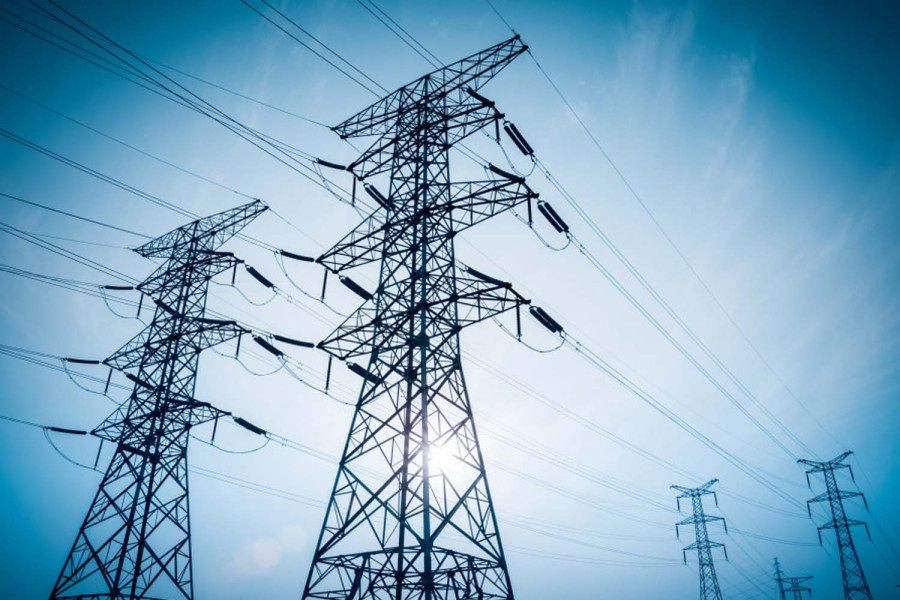National
NEA plans to light up Nepali homes with Indian energy this winter
This is the first time Nepal is preparing to buy electricity on a long-term basis through competitive bidding.
Prithvi Man Shrestha
To meet the domestic demand for power in winter when the production of Nepal’s run-of-river hydropower projects dwindles markedly, the Nepal Electricity Authority is planning to buy electricity from the Indian market under a six-month contract. The electricity will be purchased through competitive bidding, officials said.
By issuing a tender notice, the state-owned power utility body said that it would buy upto 365MW from Indian power traders from December 1 this year to May 31, next year.
The NEA plans take delivery of 300MW from the Muzaffarpur substation through the Dhalkebar-Muzaffarpur cross-border transmission line and an additional 65MW through the Tanakpur substation. The electricity will be bought round-the-clock, the notice states.
Though Nepal has been exporting electricity currently because of surplus production by the hydropower projects fed by monsoon-swollen rivers, it has to import in the winter when water levels in the rivers fall and the plants produce in the range of 30-40 percent of their installed capacity.
Currently, the total installed capacity of Nepal’s power projects stands at around 2,200MW while peak hour demand for electricity on Wednesday stood at 1866MW, according to the NEA.
The state-owned power utility body has long been buying electricity from India under government-to-government deals, particularly in the dry season which runs from December to May.
The NEA had recently started buying power from the Indian power exchange market on a daily basis. “It is the first time that we are trying to buy electricity from India through a competitive bidding process for long term power supply,” said Jayaraj Bhandari, chief of economic analysis division of the NEA.
As per the bid document published by the NEA, it plans to buy 265MW from December this year to February next year and 365MW from March to May. It plans to buy 65MW through the Tanakpur delivery point throughout the six months, and from Muzaffarpur delivery point 200MW will be bought from December to February and 300MW from March to May.
Through the option of buying power from the day-ahead-market of India Energy Exchange Limited, a power trading platform, on a daily basis, the NEA plans to import a certain amount of power under a longer-term deal.
“The main reason behind opting for a longer-term contract is to diversify the risk,” said Bhandari. “When Nepal relied on the day-ahead market to import power from India in the last dry season, we could not import as much as we wanted.” The NEA was forced to cut power supply to some industrial corridors from March to May this year due to reduced supply from India as the southern neighbour itself failed to produce enough electricity amid global shortage of coal.
Coal accounts for nearly 75 percent of India’s power output. Several Indian states had imposed load-shedding amid rising demand for power.
In late March, India had stopped providing power through the Kushaha-Kataiya cross-border transmission line and the Parwanipur-Raxaul cross-border transmission line under the fixed price regime in the night time. The southern neighbour has stopped providing electricity at fixed rate from Tanakpur since mid-February.
In late March, India had discontinued power supply during the night—from 6pm to 6am. Because of the shortage of coal amid its skyrocketing prices in the wake of the Russia-Ukraine war, coal-powered energy plants in India have been shut leading to a power shortage.
Nepal has a power exchange mechanism with Bihar and Uttar Pradesh. Under this mechanism, the two countries can buy power from each other as needed. The price has been fixed at IRs6.18 per unit for taking power through the 132kV transmission line and IRs6.65 for buying electricity through the 33kV transmission line.
Nepal can receive up to 85MW through the Tanakpur point at the rate of IRs4.12 (Rs6.62) per unit, according to the NEA.
NEA officials say the country will have to buy electricity from India in the dry season a few more years although the country has been cutting down on the import of electricity along with rising production at home.
Nepal exported electricity worth over Rs7 billion in the last four months from June to mid-September, the NEA said on Tuesday. It aims to sell electricity worth Rs16 billion in the current fiscal year, according to the NEA statement.




 9.12°C Kathmandu
9.12°C Kathmandu















